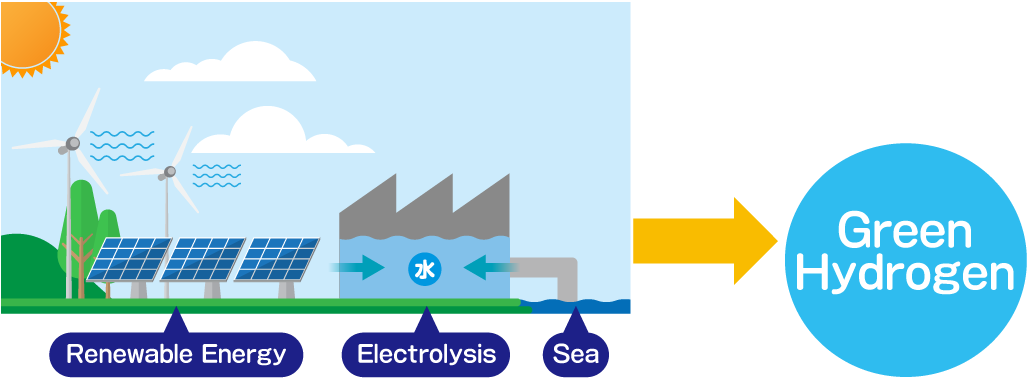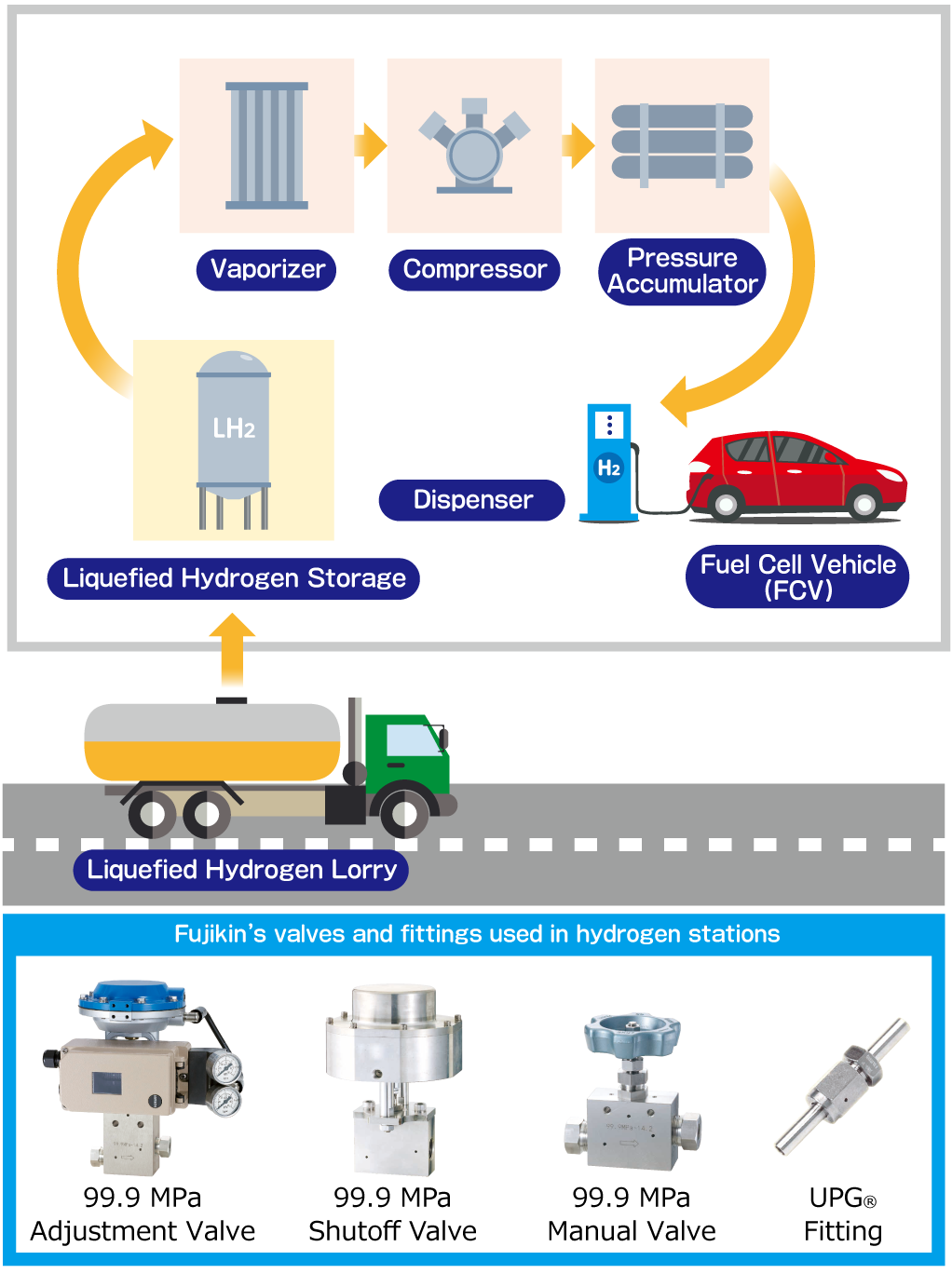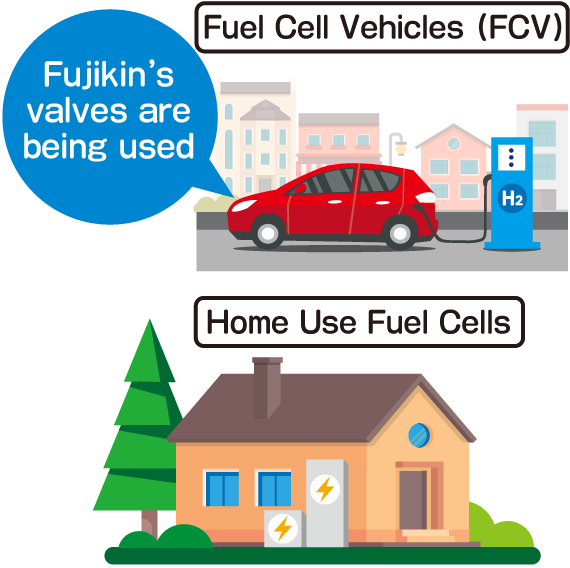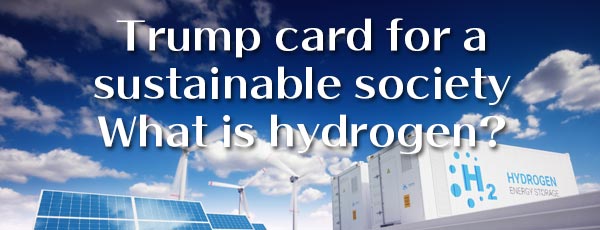Create hydrogen
Towards zero carbon with renewable energy from hydrogen
Currently, hydrogen is largely created from hydrocarbons including crude oil, natural gas, and coal, etc. For this reason, carbon dioxide is generated at the stage of hydrogen production. If water is electrolyzed by wind or solar power, zero carbon production is possible. Storage measures for natural energy which is easily influenced by the weather are also promising.

Transport hydrogen
If it is liquefied and the volume is reduced, large quantity transportation is possible
Producing hydrogen by using unused energy and natural energy from overseas and then transporting it to Japan is also under consideration, but efficient transportation methods are a challenge. One hope is the liquefaction of hydrogen. When hydrogen is cooled down to -253℃, it changes from a gas to a liquid, and its volume decreases to 1/800 which makes it possible to transport large quantities with a specialized tanker. Furthermore, other promising methods include transporting it as organic matter such as toluene which has been chemically combined with organic hydride and liquefied ammonia.

Store hydrogen
Compress with high pressure and use it safely as necessary
A fuel cell vehicle is run by a motor that is rotated with electricity created by the hydrogen loaded as fuel and reacts with the oxygen in the air. There are various systems and equipment that vary in hydrogen stations that supply fuel, but one example of the numerous equipment being deployed is a liquid hydrogen storage tank and vaporization equipment, equipment that compresses vaporized hydrogen and high pressure storage tank, and furthermore a dispenser that loads the high pressure hydrogen gas into the fuel cell vehicle's tank.

Use hydrogen
Wide range of uses such as fuel cell vehicles and power generation
Japan is said to be the country that utilizes hydrogen the most in the world. Not just fuel cell vehicles, the popularization of home use fuel cells "ENE-FARM" is continuing, which takes hydrogen from the municipal gas and produces efficient electricity and hot water. Furthermore, costs will lower if large scale application of hydrogen power generation is started, and may immediately realize the dream of a hydrogen based society.



